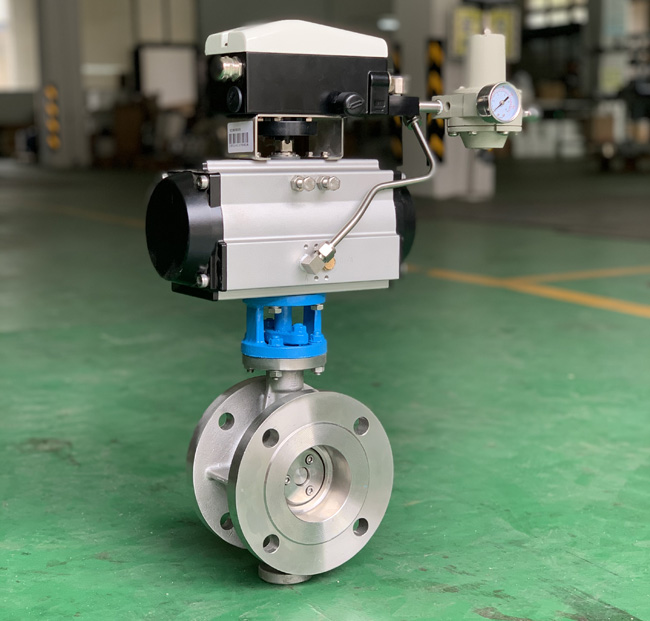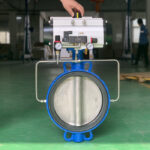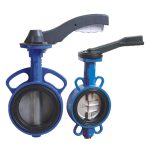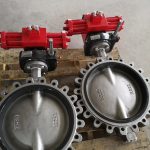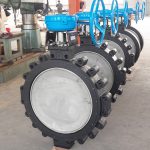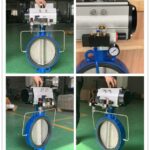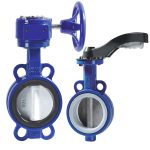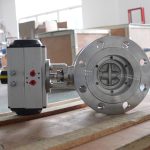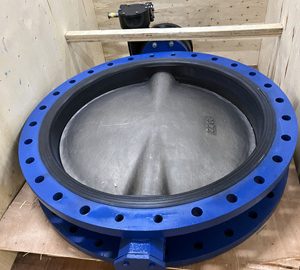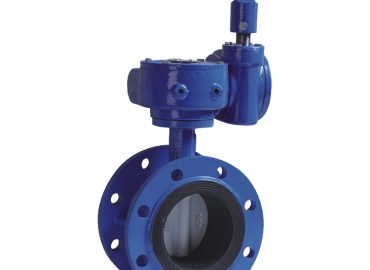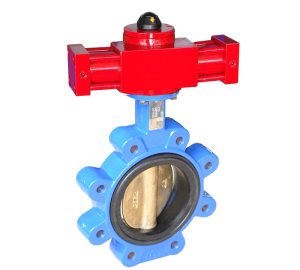Welcome to our comprehensive guide on metal seated pneumatic butterfly valves. Butterfly valves play a crucial role in controlling the flow of liquids and gases in numerous industries. Among these, metal-seated butterfly valves stand out for their robustness and versatility. In this guide, we delve into the intricate design of these valves and explore their wide-ranging applications. Whether you’re an engineer, a student, or simply someone interested in mechanical design, this guide will provide valuable insights into the fascinating world of metal-seated butterfly valves. So, let’s get started on this journey of discovery and learning.
Introduction
Metal Seated Butterfly Valves are an integral part of many industrial processes, providing a reliable and efficient solution for controlling the flow of various types of media. They are especially known for their sturdy design, high durability, and excellent resistance to extreme temperatures and pressures. The design of Metal Seated Butterfly Valves is quite unique. Unlike other valve types, they utilize a circular disc or plate which is positioned in the center of the pipe. This disc is attached to a rod which is operated either manually or by an actuator. When the valve is open, the disc rotates to allow fluid flow; when it’s closed, the disc rotates to block the flow. The ‘metal seated’ part refers to the metal-to-metal seal that these valves use, which provides a tight shut-off even under high-temperature conditions. The applications of Metal Seated Butterfly Valves are vast and varied. They are commonly used in industries such as power generation, oil and gas, chemical and petrochemical, water and wastewater treatment, food and beverage processing, and more. Their ability to handle both clean and dirty media, coupled with their high durability and temperature resistance, make them an ideal choice for a wide range of industrial applications.
Explanation of the blog post’s purpose
The purpose of this blog post is to provide an in-depth understanding of metal seated lug butterfly valves, their design intricacies, and the various applications they serve in different industries. For professionals working in fields such as engineering, manufacturing, or construction, this guide will serve as a comprehensive resource to further their knowledge on these crucial components. For students or enthusiasts interested in mechanical design, this post will offer a clear and detailed explanation of how these valves function and why they are integral to many industrial processes. By the end of this guide, readers will have a holistic understanding of metal seated butterfly valves, enabling them to make well-informed decisions regarding their use and maintenance.
Brief overview of butterfly valves and their importance
Butterfly valves are a type of quarter-turn valve used to regulate or isolate the flow of fluids. They get their name from the disc in the center that operates much like a butterfly’s wings – open when flat and closed when perpendicular to the flow direction. This disc, or ‘butterfly’, is mounted on a rotating shaft and, when the valve is closed, it blocks off the passageway, stopping flow. When the valve is fully opened, the disc rotates a quarter turn so it’s parallel to the flow direction, allowing flow. Butterfly valves are immensely important in various industries such as water supply, wastewater treatment, fire protection, and power oil, due to their reliability, easy operation, and versatility. They are highly efficient, requiring less material, being lighter and usually more cost-effective than other types of valves. Moreover, they can handle large flow rates, making them indispensable in many industrial applications.
Understanding Butterfly Valves
Butterfly valves are a type of flow control device, used to regulate or isolate the flow of a liquid or gas through a series of pipes. They operate in a similar manner to a damper used to control air flow in large air systems. The butterfly reference in its name is derived from the metal disc or “butterfly” that is mounted on a rotating shaft in the center of the valve. When the valve is fully opened, the disc is rotated a quarter turn so that it allows an almost unrestricted passage of fluid. When the valve is fully closed, the disc is rotated a quarter turn so that it completely blocks off the passageway. Butterfly valves are widely appreciated for their durability, ease of operation, and efficiency. They come in different types including concentric, double-eccentric, and triple-eccentric, each designed to handle different pressure ratings and applications. Due to their simple and compact design, butterfly valves require less material than other types of valves, making them more economical and lighter in weight. They are commonly used in various industries such as water supply, wastewater treatment, fire protection, and gas supply, among others.
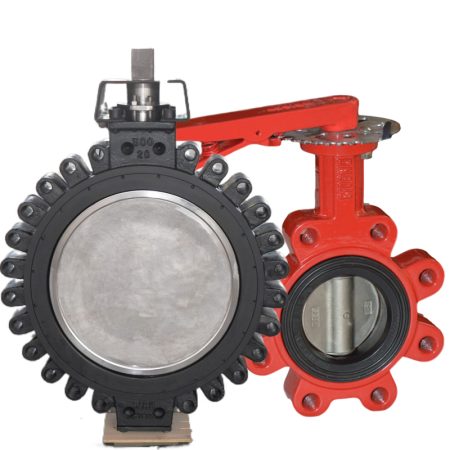
Definition and basic description of butterfly valves
A butterfly valve is a type of quarter-turn rotational valve that is used to control the flow of fluids in a piping system. This valve consists of a disc or plate that is positioned in the center of the pipe and attached to a rod. The disc pivots within the valve body, allowing for the regulation of fluid flow. When the valve is open, the disc rotates to permit fluid flow, and when it’s closed, it rotates to obstruct the flow. The disc can also be turned at varying degrees to modulate the flow. Butterfly valves are lightweight and have a small installation footprint, making them a popular choice for on-off or modulating services in various industries. They are part of a family of valves known as quarter-turn valves, indicating that the valve is fully opened or closed when the disc is rotated a quarter turn.
Key components of butterfly valves
Butterfly valves are made up of several key components that allow them to effectively control the flow of fluids. The primary parts include the body, disc, stem, and seat. The body provides a protective casing and is generally designed to fit between two pipe flanges in the closed position. The disc, which is centrally positioned in the valve body, rotates to open or close the valve, controlling the flow of the medium. The stem, which can either be wetted or non-wetted, connects the actuator or manual handle to the disc, facilitating the movement of the disc. The seat provides a sealing surface that the disc comes into contact with to ensure a tight shut-off. Other components like the actuator, upper and lower bearings, bonnet, and sealing arrangement play supporting roles in the overall functioning of the butterfly valve.
Different types of butterfly valves
Butterfly valves come in several types, each designed to meet specific operational requirements. The most common types are concentric, double-eccentric (or high-performance), and triple-eccentric butterfly valves. Concentric butterfly valves, also known as resilient-seated valves, have a rubber seat and are generally used for low-pressure and temperature applications. They are cost-effective and ideal for handling water, air, and other non-aggressive media. Double-eccentric butterfly valves, on the other hand, have an off-center stem that allows the disc to completely clear the seal when opened, reducing wear and tear. This makes them suitable for higher pressure systems and more abrasive media. Lastly, triple-eccentric butterfly valves, also known as metal-seated valves, have a metal seat and a disc that is not only offset from the center of the pipe but also from the center of the stem. This design virtually eliminates friction between the sealing surfaces, allowing for higher temperatures and pressures. These are typically used in critical applications in industries like oil and gas, power generation, and chemical processing.
Focusing on Metal Seated Butterfly Valves
Metal Seated Butterfly Valves are a specialized type of butterfly valves that are designed to handle more demanding applications where high temperature, high pressure, or corrosive materials are involved. The ‘metal seat’ in these valves refers to the sealing surface between the disc and the body of the valve. This metal-to-metal seal is designed to withstand extreme conditions, providing a more durable and reliable solution than softer materials like rubber. Unlike other types of butterfly valves, metal seated butterfly valves can handle temperatures up to 1200 degrees Fahrenheit and are resistant to wear and tear, making them an excellent choice for heavy-duty industrial applications. They are commonly used in sectors such as power generation, petrochemicals, and mining where the operating conditions can be very harsh. Moreover, these valves offer tight shut-off capabilities, ensuring that there is no leakage even under high-pressure conditions. Despite their robustness, metal seated butterfly valves are also known for their compact design and ease of maintenance, which adds to their appeal in various industrial settings.
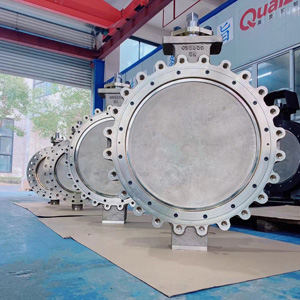
Detailed explanation of metal seated butterfly valves
Metal seated butterfly valves are a specific type of butterfly valves designed to regulate the flow of liquids and gases. They feature a metal seat, contrasted to soft-seated valves that use an elastic, non-metallic material on one side of the seal. The metal seat can endure higher temperatures and pressures, which makes these valves suitable for more demanding applications. The metal seated structure creates a bubble-tight shutoff, effectively preventing leaks and offering better flow control due to lower friction. These valves operate in a quarter-turn style, meaning a 90° rotation of the closed disc will fully open the valve, and vice versa. Notably, there are high-performance versions, such as the triple offset butterfly valve, which provides bi-directional tightness at maximum pressure.
Description of the unique features of metal seated butterfly valves
Metal-seated butterfly valves are a distinctive variant of butterfly valves, designed specifically for applications dealing with high temperature or corrosive fluids. Unlike soft-seated butterfly valves that use elastic non-metallic material for sealing, metal-seated butterfly valves employ a metal seat, which provides them with enhanced durability and resilience against harsh operating conditions. One unique feature of these valves is their ability to create a bubble-tight shutoff, preventing leaks and offering better flow control. This feature is attributed to the metal-to-metal seal, which has lower friction compared to other types of seals. Another distinctive characteristic of metal-seated butterfly valves is their high-performance under extreme temperatures, as the material of the metal seat can withstand higher temperature and pressure ratings than those of soft seats. Furthermore, some high-performance butterfly valves come with a metal backup for fire safety, ensuring reliable operation even in fire-prone environments.
The Design of Metal Seated Butterfly Valves
Metal seated butterfly valves, also known as triple offset butterfly valves, are uniquely designed to handle more extreme conditions, such as higher pressures and temperatures, and abrasive media. This design features three distinct offsets. The first offset involves the placement of the shaft behind the disc, which allows the disc to seal against the body without rubbing across the seat. The second offset positions the shaft to one side of the valve centerline, enabling the disc to completely clear the seat when the valve is opened, thereby reducing wear and tear. The third offset, which gives this valve type its name, introduces a conical profile to the seat and disc sealing surfaces, ensuring that they only come into contact at the final point of closure. This eliminates the friction that would typically occur between the disc and seat during operation, significantly extending the valve’s lifespan. The seats in these valves are made of metal, commonly stainless steel or stellite, which can withstand high temperatures and resist corrosion. The disc and seat are often precision machined to provide a tight shut-off, even under high differential pressure. These features make metal seated butterfly valves an ideal choice for critical applications in industries such as oil and gas, power generation, and chemical processing where the ability to control flow with precision and reliability is paramount.
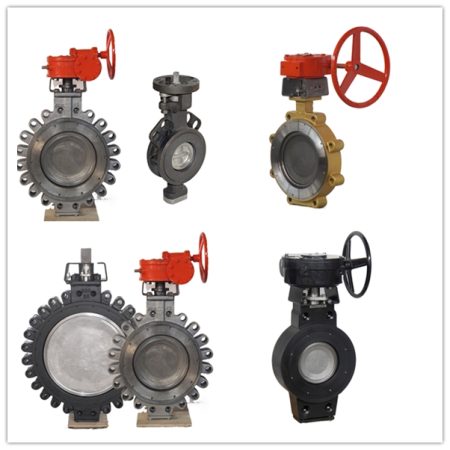
Description of the design process and factors considered during design
The design process is a complex and multifaceted procedure that involves the systematic application of creativity and technical knowledge to solve a problem or address a need. It often starts with identifying the problem or need, followed by conducting research to gather relevant information. This could include understanding user needs, market trends, and technological possibilities. Next, designers generate a number of ideas or concepts, often through brainstorming or other ideation techniques. These concepts are then developed into preliminary designs, which are evaluated against the initial problem or need and any constraints, such as cost, time, or materials. The most promising designs are then refined further, often involving creating prototypes and testing them in real or simulated conditions. Feedback from these tests is used to iterate on the design until a final solution is reached.
Several factors are considered during the design process. Functionality is paramount – the design must meet the intended purpose or solve the identified problem. Aesthetics, or how the design looks and feels, is also important, especially for products or spaces intended for human use. Sustainability is an increasingly important consideration, with designers aiming to minimize the environmental impact of their designs through choices of materials, manufacturing processes, and product lifespan. Cost-effectiveness is another key factor, with the design needing to be economically viable to produce and sell. Finally, safety and compliance with regulations and standards are crucial considerations in many fields of design.
Explanation of the materials used in construction and their benefits
Several materials are commonly used in construction, each with their own specific benefits. Concrete, for instance, is a versatile and durable material that provides excellent compressive strength, making it ideal for building foundations, walls, and other structures. Steel is another popular choice, known for its incredible tensile strength and durability, and it’s often used in the construction of skyscrapers, bridges, and other large-scale projects. Wood, while less robust than concrete or steel, offers aesthetic appeal and natural insulation properties, and is typically used in residential construction. Brick and stone, while more expensive, provide excellent fire resistance and durability, and are often used for their aesthetic appeal. Glass is utilized for windows and facades, allowing natural light into buildings while providing insulation. Finally, plastics and composites are increasingly being used due to their versatility, lightweight nature, and resistance to various environmental conditions. These materials can be made to mimic other materials, are easy to install, and require little maintenance. Ultimately, the choice of construction material depends on the specific requirements of the project, including factors such as cost, durability, aesthetics, and environmental impact.
Discussion on the design variations and why they exist
Design variations in metal seated butterfly valves exist primarily to cater to the diverse needs of different industrial applications. These variations are determined by factors such as the type of fluid being controlled, the operating pressure and temperature, and the specific requirements of the system where the valve is installed. One common design variation is the type of disc mounting, which can be either centered (concentric) or offset. Centered designs are simple and economical, suitable for low-pressure applications. Offset designs, on the other hand, include single, double, and triple offset valves. They provide a tighter seal and are more suitable for high-pressure and high-temperature applications. Another variation is in the type of metal used for the seat, which can range from stainless steel to more exotic alloys depending on the corrosiveness of the fluid and the operating temperature. The design of the actuator – manual, electric, pneumatic, or hydraulic – is also varied based on the need for speed, control precision, and fail-safe operation. Thus, these design variations exist to ensure that metal seated butterfly valves can be tailored to meet the specific demands of each application, providing optimal performance and reliability.
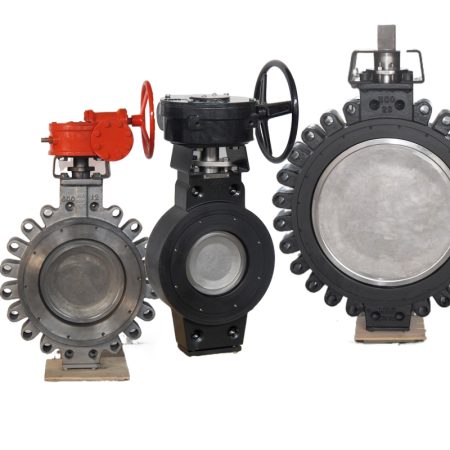
Applications of Metal Seated Butterfly Valves
Metal Seated Butterfly Valves are employed in a wide array of applications across various industries due to their robust design and ability to handle harsh conditions. In the oil and gas industry, these valves are commonly used for isolating and regulating flow in pipelines carrying crude oil, natural gas, and associated by-products, where they must withstand high pressures, temperatures, and corrosive substances. In power generation, especially in coal-fired and nuclear plants, metal seated butterfly valves are used in cooling water systems, boiler feed water systems, and steam lines, due to their capacity to handle high-temperature and high-pressure environments. The chemical industry also relies on these valves for controlling flow in processes involving corrosive and abrasive fluids. The pharmaceutical and food and beverage industries use these valves in sterilization processes and high-temperature applications, as they provide a tight shutoff and can endure the rigorous cleaning procedures required in these sectors. In water treatment facilities, metal seated butterfly valves are used in slurry services and other abrasive applications due to their durability and resistance to wear. Furthermore, these valves are also used in HVAC systems for flow control and isolation purposes. Their compact design, combined with their ability to provide reliable performance under extreme conditions, makes metal seated butterfly valves a versatile solution for a plethora of demanding applications.
Explanation of where and why metal seated butterfly valves are used
Metal-seated butterfly valves are predominantly used to control the flow of various liquids and gases in demanding environments. Their robustness and durability make them an optimal solution for high-temperature applications, such as those found in the oil and gas, chemical processing, and power generation industries. The metal seat enhances their ability to withstand abrasive media, high pressures, and corrosive conditions. Furthermore, these valves are often utilized in situations requiring reliable isolation of fluid flow, due to their design that allows for a tight shut-off. It’s important to note that the choice between metal-seated and soft-seated butterfly valves depends on the specific application requirements. While metal seats can handle more extreme conditions, soft seats made from materials like EPDM or VITON are typically used for non-critical applications.
Real-world examples of these applications
The application of various construction materials can be seen in structures all around the world. Concrete, for instance, is used extensively in infrastructure projects like the Hoover Dam in the United States, which stands as a testament to concrete’s durability and strength. Steel’s high tensile strength and flexibility can be seen in the construction of the Burj Khalifa in Dubai, the world’s tallest building, which would not have been possible with traditional building materials. The use of wood in construction is exemplified in traditional Japanese architecture, such as the Horyuji Temple, one of the oldest wooden buildings in the world. Brick and stone construction shines in historical structures like the Colosseum in Rome, known for its durability and resistance to weathering. Glass is prominently featured in modern architecture, a prime example being The Shard in London, where it’s used not just for windows but for the entire facade, creating a sleek and modern aesthetic. Lastly, the versatility of plastics and composites can be seen in the Eden Project in the UK, where innovative plastic domes create a series of unique microclimates. These examples illustrate the diverse applications and benefits of different construction materials in real-world settings.
Benefits of using metal seated butterfly valves in these applications
Metal seated butterfly valves offer several benefits that make them ideal for various applications. One of their primary advantages is their efficiency. Their design allows for easy installation, and they are lightweight, making them a practical choice for many industries. They provide reasonable flow control in a compact design, which is particularly beneficial in applications where space is limited. The material of the metal seat enhances the temperature and pressure rating of the butterfly valve, making it suitable for high-temperature and high-pressure environments. Additionally, their high flow capacities enable the use of smaller units, reducing weight, cost, and space requirements significantly. Furthermore, the unbalanced torque reduction in butterfly valves increases their application range. For tighter situations and tougher applications, especially those involving high temperatures, the triple offset butterfly valve design offers easier maintenance and superior performance.

Advantages and Disadvantages of Metal Seated Butterfly Valves
Metal Seated Butterfly Valves come with several advantages that make them a preferred choice for many industries. The primary advantage is their ability to withstand extreme conditions, including high temperatures and pressures, which is a feature not typically found in their soft-seated counterparts. This makes them ideal for applications in industries like oil and gas, power generation, and chemical processing. They also offer excellent durability and longevity, thanks to their robust construction, which can effectively resist wear and tear from abrasive media. Additionally, these valves provide a tight shutoff, ensuring efficient isolation of fluid flow, which is critical in many industrial applications.
However, despite these benefits, there are also some disadvantages associated with Metal Seated Butterfly Valves. One of the main drawbacks is the cost. These valves are generally more expensive than soft-seated butterfly valves due to the sophisticated design and the use of high-quality materials required to withstand harsh conditions. Another potential disadvantage is the need for regular maintenance. While these valves are known for their durability, they still require periodic inspection and maintenance to ensure optimal performance and seal integrity. If neglected, issues like seat leakage can occur over time. Furthermore, while they are capable of handling a wide range of temperatures, there is a limit to how much heat they can endure. Extreme temperatures may cause deformation or damage to the metal seat, affecting the valve’s performance. Lastly, these valves may not be suitable for all applications. For low-pressure, non-critical applications, a less costly and simpler soft-seated butterfly valve might be sufficient.
Discussion on the pros and cons of using metal seated butterfly valves
Metal seated butterfly valves come with several advantages and disadvantages, making them suitable for specific applications. The key benefits of using these valves include their high resistance to corrosive liquids and gases, making them ideal for industries dealing with harsh substances such as oil and gas, chemical processing, and power generation. They are also appreciated for their easy installation and long valve life, and their design allows for quick and labor-saving operation. However, they also have some limitations. One of the primary drawbacks is their limited flow control capabilities, meaning they may not be well-suited for applications requiring precise flow regulation. Additionally, the material of the metal seat limits the temperature and pressure rating of the butterfly valve, which might restrict their use in certain high-pressure or high-temperature environments. Therefore, while metal seated butterfly valves offer several benefits, their application should be carefully considered based on the specific requirements of the system.
Comparison with other types of butterfly valves
Butterfly valves come in various types, each with its unique features and suitability for different applications. The most common types include resilient-seated, high-performance, and metal-seated butterfly valves. Resilient-seated butterfly valves, made with a flexible rubber seat, create a tight seal when the valve is closed. They are typically used in low-pressure and temperature applications due to their limited tolerance to heat and pressure. High-performance butterfly valves, on the other hand, have a double offset design that allows for higher pressure and temperature ratings, making them suitable for more demanding applications. Metal-seated butterfly valves, as discussed earlier, are ideal for extreme conditions due to their robustness and durability. They can handle abrasive media, high pressures, and corrosive conditions. While all these types of butterfly valves control flow, their specific applications vary based on factors such as temperature, pressure, and the nature of the media being controlled.
Maintenance and Care for Metal Seated Butterfly Valves
Maintenance and care for metal seated butterfly valves is a crucial aspect to ensure their longevity and optimal performance. Regular inspection is the first step towards maintaining these valves. It’s important to check for any signs of wear or damage, such as leakage, corrosion, or deformation. This can be done visually or through more advanced methods like ultrasonic testing. If any issues are detected, immediate action should be taken to resolve them. The valve should be cleaned regularly to prevent the accumulation of debris that could affect its operation. This can be done using non-abrasive cleaning solutions to avoid damaging the metal surface.
Lubrication is another key aspect of maintenance. The moving parts of the valve, including the stem and disc, should be lubricated regularly to reduce friction and prevent wear. The type of lubricant used should be compatible with the valve’s material and the fluid it handles.
Moreover, the seating area of the valve, which is often exposed to high pressure and temperature, requires special attention. The metal seat should be inspected for any signs of wear or erosion, and if necessary, re-machined to restore its original surface condition. In some cases, replacing the metal seat might be the most cost-effective solution.
The actuator, which controls the movement of the valve, also needs regular maintenance. This involves checking the alignment, adjusting the torque, and ensuring that the actuator is functioning properly. Regular functional tests should be conducted to verify the valve’s performance under operating conditions.
Lastly, it’s important to keep a record of all maintenance activities. This will help in identifying trends, predicting potential issues, and planning preventive maintenance. By following these maintenance and care guidelines, you can ensure that your metal seated butterfly valves continue to function efficiently and reliably, thereby reducing downtime and maintenance costs.
Tips and guidelines for maintaining metal seated butterfly valves
Maintaining metal seated butterfly valves involves several steps to ensure optimal operation and longevity. Proper installation is crucial, which includes aligning the pipes correctly and keeping the disc in a partially open position during installation to avoid damage. Regular cycling of the valve is recommended, especially if it is not used frequently. It is also crucial to relieve system pressure before any maintenance activity. Monitoring and applying grease at constant intervals, as per the manufacturer’s guidelines, can help maintain the valve’s smooth operation. Replacing the valve seat or liner may be necessary, which involves removing the stem and disc. Regular inspection and lubrication of the valve components, such as the stem and disc pivot points, are also essential. During installation, secure bolts and gaskets should be used to ensure stability and functionality. Lastly, it’s important to understand that butterfly valves are designed to operate between two flanges, distributing the shaft and disc weights evenly, thus minimizing seat wear.
Common issues and how to troubleshoot them
Common issues with metal seated butterfly valves often involve leakage or difficulty in operation. Leakage may occur due to wear and tear on the metal seat over time, which can compromise the tight seal necessary for efficient operation. To troubleshoot this issue, regular inspection is necessary to detect signs of wear or damage early. If a leak is detected, the valve may need to be replaced or repaired by a professional. Difficulty in operation, on the other hand, may result from improper installation or alignment of the valve. Ensuring that the valve is correctly installed and aligned can help mitigate this issue. Additionally, debris or sediment buildup within the valve can also cause operational issues. Regular cleaning and maintenance can help prevent such buildup and ensure the smooth functioning of the valve. In case of severe issues, it’s recommended to consult with a valve specialist or the manufacturer for appropriate solutions.
Conclusion
In conclusion, metal seated butterfly valves serve as a vital component in many industrial applications. Their robust design and ability to withstand harsh conditions make them an excellent choice for industries such as oil and gas, power generation, and chemical processing. However, it’s essential to remember that these valves come with their own set of challenges and may not be the best fit for every application.
While they offer an impressive resistance to high pressures, temperatures, and corrosive media, their cost and maintenance requirements could be a deterrent for some users. They demand regular inspection and maintenance to ensure optimal performance and longevity. Neglecting these aspects could lead to issues like seat leakage, which can compromise the efficiency of your system.
Moreover, the suitability of metal seat butterfly valve also depends on the specific requirements of your system. For low-pressure, non-critical applications, a less costly and simpler soft-seated butterfly valve might be more appropriate. It is therefore crucial to consider the specific needs of your application before choosing between different types of butterfly valves.
Despite these challenges, the benefits offered by metal seated butterfly valves often outweigh the disadvantages, especially in demanding industrial environments. Their excellent durability, tight shutoff capabilities, and resistance to wear and tear make them a reliable choice for controlling and isolating fluid flow in many circumstances.
Ultimately, the decision to use metal seated butterfly valves should be based on a thorough understanding of their pros and cons, as well as careful consideration of the specific demands of your application. By doing so, you can ensure that you choose the most suitable valve type for your needs, optimizing the efficiency and reliability of your systems.
Recap of the key points discussed in the blog post
In this blog post, we’ve delved into the intricacies of triple offset metal seated butterfly valve , discussing their pros and cons, comparing them to other types of butterfly valves, and providing tips for their maintenance and care. We highlighted the benefits of metal seated butterfly valves, including their resistance to corrosive substances, easy installation, and long lifespan. Conversely, we also drew attention to their limitations, such as limited flow control capabilities and restrictions in high-pressure or high-temperature environments. In comparison with resilient-seated and high-performance butterfly valves, we illuminated the specific applications and constraints of each type. Lastly, we emphasized the importance of regular inspection, cleaning, lubrication, and functional tests in maintaining the efficiency and reliability of these valves. By understanding these key points, users can make more informed decisions about which type of valve suits their specific needs and how to best maintain them.
Final thoughts on the importance and utility of metal seated butterfly valves
Metal seated butterfly valves serve as a crucial component in various industrial applications due to their robustness and durability. Their ability to withstand high temperatures, pressures, and abrasive conditions make them an invaluable asset in sectors such as power generation, water treatment, and chemical processing. They offer excellent control over fluid flow, ensuring efficiency and safety in operations. Furthermore, their compact design and lightweight nature allow for easy installation and maintenance, reducing downtime and operational costs. However, their utility is not just limited to their functionality. The longevity of metal seated butterfly valves also contributes to sustainable practices by reducing the need for frequent replacements, thereby minimizing waste. Therefore, investing in high-quality metal seated butterfly valves is not only a strategic move for operational efficiency but also a step towards responsible and sustainable industrial practices.


